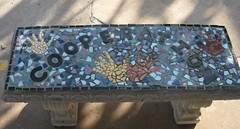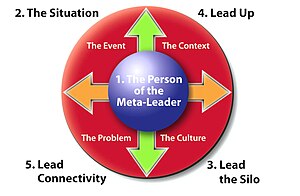IN PRAISE OF A LIVING LEGEND: DR. ABDISAMAD NUR
By Abdiwahid Isse
“A good friend is like a four-leaf clover; hard to find and lucky to have.”
This was supposedly a short post and a hastily written one, triggered by these photos of Dr. Abdisamad with his older brother and his friends in Xaraf, Xamar 1988.

The esteemed Philosopher is a man who has been through many trials and tribulations. He’s been through the worst times/crises of his life by not only losing his beloved father but also a mentor who was a protector, a provider, a confidant and a very close friend. Looking closely at the board in the room (second photo) , there appears a picture of his friends at FIAT–a unique central meeting place that is an acronym for “Fabbrica Italiana Automobili Torino”, which, in English translates to “Italian Car Manufacturer of Torino.” Contrary to Ray Charles’ Georgia on My Mind song, instead, Dr. Abdisamad would have his friends on his mind.
Maybe, as an avid reader at a very young age, he must have read and taken it to his heart and maybe indoctrinated–if at all such things existed–and internalized it into his inner self, that childhood fable of The Bear and the Two Friends.
Here he vows in a whisper–a memo directed , if you will– to his own subconscious, and an indelible one that he will never abandon his friends and will always treat them with respect, dignity and love. Maybe that explains why from at an early age on and up to now with accomplished academic credentials and a steady job at Fortune 500, his touching sagacity continues to affect the lives of many of his friends.
A loving husband and father of three beautiful adorable kids, he seeks out and reconnects with friends, calls, talks, pays visit in faraway places, supports, gives advice, values their friendship, laughs carelessly, reminisces with them about the good old days in Mogadishu–a Mogadishu that was so vibrant and metropolitan in context. So cosmopolitan that it was dubbed the “Pearl of Africa.” Mogadishu, meaning the “Seat of the Shah” in Persian, was undoubtedly, a diverse, peaceful and beautiful city!
He indulges in having fun, good times and jokes with them, brings them together, such as when he arrives in Toronto; he brings together friends who live in the same city who otherwise would not have seen each other for years on end. He has an aura of charisma that surrounds him and which forever attracts others towards him, always extending his arm to shake and introduce himself, looking people in the eye, calling them by their first names once they get acquainted, listening to them attentively, giving his complete attention, thus perfecting that ancient clichés or wisdom of having two ears and one mouth is to listen more and speak less.

He is constantly making friends on the fly–new friends who will become his bosom friends for life. Simply put, he always inherently sees the good in people. His friends come in all shapes and forms and from social statuses that range from young shoe-shiners to adults detailing cars at FIAT. Add to that the nomads he met on his travels or those he meets in board rooms while transcending the contemptible and petty ‘isms that we tend to divide ourselves. They hail from every nook and cranny, every little hamlet and every region of Somalia.
Early Childhood
In the sprawling Hodan suburb at Jidka Soddonka, a new development is afoot, big open spaces, half-finished construction of rows of houses, and electrical transmission lines; some houses had electrical power, very few had telephone lines, no running water while most houses had “Fuusto”–a barrel/drum or water tank mounted at the top of the house for water use. Here, Abdisamad made a lot of friends. Rambunctious little kids ran here and there, played hide and seek in the open spaces, Katimeey katim and also “Bistoolo Bistooleey” which were similar to The Indian and Cowboygames; they played soccer barefooted, with Gocondho (Tribulus terrestris), Booc Booc (Calotropis procera) Qodax (thorns) common with Acacia species in abundance, friendship cemented for life.
He would gather them in his Family’s house and let them play board games with him, share his stuff…A prelude to what will happen in the future in their house in Shibis suburb.
A water tank truck brings fresh water to that neighborhood once every three or so days, especially to his family’s house, but one day he found out that some of his friends didn’t have water at all, there begun a quest to quench the thirst of his friends and their families. He would fill up a bucket of water, carry it and deliver it to his friends’ houses, one house at time. Skinny and lanky he was, he would fall down carrying the bucket at times by the sheer load of the water; trying ever so hard not to spill the water, he would get up and never relent until he delivered the life-saving precious little water container.
After the good Doctor had done this long ago…a bucket for a friend in need, there sprung up all kind of charities in Africa now, using the bucket to deliver water to those without BIYO (water).
Moving to Shibis
Adept at making new friends, Dr. Abdisamad saw more diverse and interesting neighborhoods, explored Bilaajo (from Italian vilaggio for village in English) Hoos Market, Bilaajo Kor, Khamiir Restaurants in Manaboolyo (monopoly), Caano San and then ventured into Cabdiasiis and Liido Beach. At times he went further afield to Shingaani and city center while making friends along the way.
In Shibis Hoose, he would bring in more friends with him at break time, but friends would come to his house without him as well, in a beehive like activity trekking in and out of the house during school hours; most would help themselves to cold water or homemade ice cream “Jalaato” (Italian gelato), from the fridge or would eat snacks and feel at home. This jovial and genuine affection for friends and others continued up to high School in Sakhawaddin and beyond.
Smart, studious, and disciplined, he excelled and shined at school. Well-mannered, extremely polite, and considerate in nature, he hardly created trouble at home. He had Adeer (uncle) Nur’s ear, so to speak. Adeer Nur Bidaar AUN loved his kids immensely and respected and welcomed their friends. As a gesture of goodwill, Uncle Nuur Bidaar facilitated visas, passports, and scholarships and even paid air travel tickets and other travel expenses to his children’s friends from his own meagre resources.
The trend of inviting his friends over continued, and their house was the perfect “Rendezvous Place” for eating capacious, succulent, finger-licking and delicious foods, or Casariye to die for which was served every day. It consisted of Sambosas, Bur, Daango or Salool and other goodies and Spiced Shaah with Milk or Qaxwa Xaraar and of course, the main attraction which was, watching videos of Soccer Tournaments, or NBA gamers mainly between the Lakers vs. Celtics, or my favorite…the selection of Pele’s wonderful goals and skills. Thanks in part to Abdisamad begging, pressuring and convincing his father to approach business people he was friends with and some in Somali Airlines to bring VHS videos from Italy right after the games were played in Europe.
I remember very vividly watching the entire World Cup of 1982 held in Spain at their house. The noise, the clapping or shrill shouts had at times reached at a gradually ascending pitch crescendo. I would imagine it must have been unbearable for his family. Most of us that year rooted for Brazil, but was beaten by Italy in the quarterfinals 3-2. Paolo Rossi screwed us up by scoring all the 3 Italian goals. Also in 1988, we watched the entire European Champions won by The Netherlands, Ruud Gullit, Van Basten, Rijkaqrd and Koeman as we dubbed him Tima cadde or as some would say “tima cadde najis najis dhalay.” When a team visited the capital from other countries, we would run to him for a guest pass at Lujino, Conis or Mogadishu Stadium, or we would implore him to get some tickets for us.
Abdiwahid Isse
Email:abdiwahid96@hotmail.com
Email:abdiwahid96@hotmail.com
















